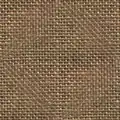Alamode (Allamod[1]) was a thin, soft, fine, and lustrous silk material. It was one of England's local silk varieties. However, it was recognized as ''Alamode'' in the early 17th century before it was famous for its use in scarves.[2][3][4][5]
Weave
It was a plain weave fabric.
Use
The use of Alamode extended up to the 18th century, and it was majorly used in scarves and hoods. In addition, it was used for jackets and also as a mourning cloth.[1][5]
See also
- Alacha, a silk that was imitated in England after prohibiting imports from India.
References
- 1 2 Tortora, Phyllis G.; Johnson, Ingrid (2013-09-17). The Fairchild Books Dictionary of Textiles. A&C Black. p. 10. ISBN 978-1-60901-535-0.
- ↑ Description: ''Letter from Honour Driden to her father Sir John asking him to buy her brother Richard a cap and her a gorget of holland and 2 ells of alamode for a scarf.'' Letter from Honour Driden to her father Sir John asking him to buy her brother Richard a...
- ↑ Lowry, Priscilla (2003). The Secrets of Silk: From textiles to fashion. St. John's Press. pp. 149, 168. ISBN 978-0-9544140-1-6.
- ↑ Cole, George S. (1900). Cole's Encyclopedia of Dry Goods: A Reference Book for the Wholesale and Retail Dry Goods Trade of the United States, Containing a Descriptive List of All the Standard Fabrics, Garments, and Related Articles of Merchandise ... with a History of Cotton, Silk, Wool, Flax, Jute, Ramie, Hemp and Other Commercial Fibers, and a Full Description of the Processes of Carding, Spinning, Weaving, Bleaching, Dyeing and Printing ... Root Newspaper Association. p. 8.
- 1 2 Montgomery, Florence M. (1984). Textiles in America 1650-1870 : a dictionary based on original documents, prints and paintings, commercial records, American merchants' papers, shopkeepers' advertisements, and pattern books with original swatches of cloth. Internet Archive. New York ; London : Norton. pp. 143, 144. ISBN 978-0-393-01703-8.
From Boston, Samuel Sewall wrote for narrow and broad alamodes in 1690, and in 1693 he asked for "a pattern of good strong colour'd Silk for a Jacket, a pc of Alamode" (Letter book, 1: 116, 137). John Banister ordered alamode in 1739 from a pattern card or book: "1 Ps rich V2 yd black Allamode No. 14, 60 !/2 Ells, 2 /" (Banister Papers). Although it was generally dyed black for mourning, James Beekman ordered "Sky-colored figured" alamode in 1766 (Beekman Papers, 2:769).
Look up alamode in Wiktionary, the free dictionary.
This article is issued from Wikipedia. The text is licensed under Creative Commons - Attribution - Sharealike. Additional terms may apply for the media files.


.svg.png.webp)